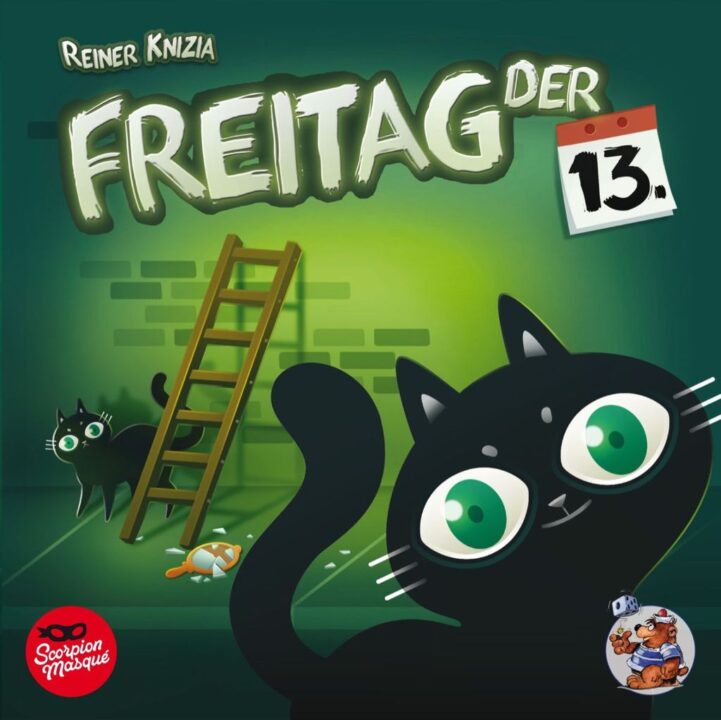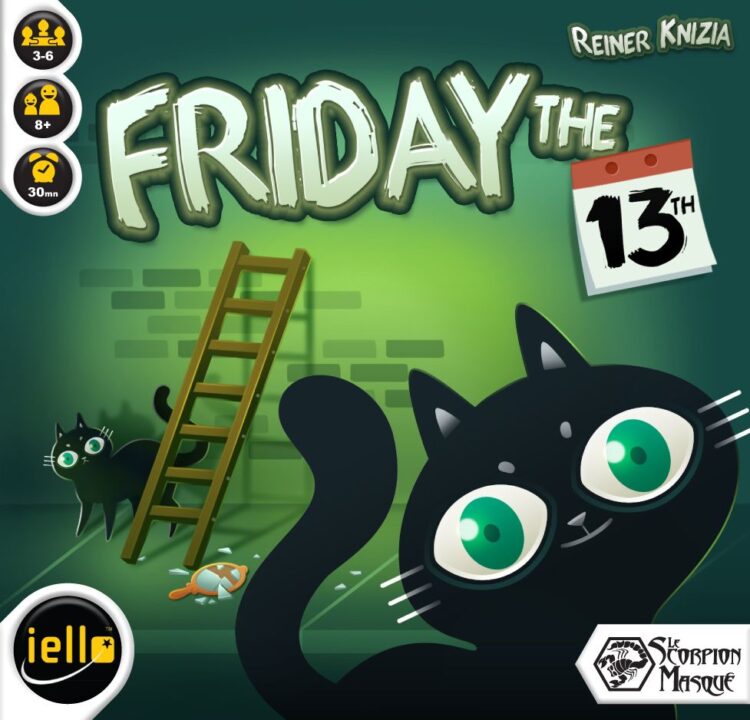Welcome to my review of the board game Poison. This game is a bubbling cauldron of strategy, tension, and a dash of mischief. With potion cards, cauldrons, and a race to avoid getting poisoned, it’s a game that’s sure to keep you on your toes. Let’s uncover what makes this game tick and if it’s worth adding to your collection!
How It Plays
Setting up
Shuffle the deck of potion cards and deal 13 cards to each player. Place three cauldron cards in the center. You’re now ready to start brewing (or poisoning)!
Gameplay
On your turn, you play one card into a cauldron. If the total of the cards in a cauldron goes over 13, you take all the cards as penalty points. Poison cards count as 4 points and are wild, adding extra tension. The game involves a mix of strategy and a bit of luck to avoid ending up with a poisonous potion.
Winning the game
After all cards have been played, players count their penalty points. The player with the fewest points wins. It’s that simple, but the fun lies in the sneaky, strategic moves you make along the way!
Want to know more? Read our extensive strategy guide for Poison.
Unpacking the Gameplay Mechanics of ‘Poison’
‘Poison’ is a clever little game that keeps you on your toes like a cat in a room full of rocking chairs. Let me tell you about the gameplay mechanics that make it tick. It’s a card game but don’t let that fool you into thinking it’s simple.
Each player starts by getting a hand of cards, featuring different potion ingredients with values from 1 to 7. The twist? Some cards are laced with poison! Each turn, you play a card into one of three cauldron piles. If the total value of a cauldron exceeds 13, the unlucky soul who pushed it over has to take all the cards in that pile, complete with their poisonous ingredients.
Here’s where strategy comes in. You see the cards in your hand and think, “I can do this!” But before you know it, you’re stuck with a pile of poisonous cards and cursed by your friends. You gotta balance playing high-value cards to avoid taking cauldrons, with keeping a few low-value cards to keep the game going. It’s a tightrope walk, and we’re all wearing clown shoes.
There is also a neat endgame scoring system. Non-poison cards count as negative points, while poison cards are worth positive points. The player with the fewest points wins, which adds an extra layer of ‘think twice’ before you leap.
Luck plays a role, but the game leans more on strategy and planning. Don’t let a moment of distraction turn into a poison pill for your chances of victory!
Now, let’s talk about how players interact and why my friend Dave still thinks I marked the cards.

Player Interaction in ‘Poison’: Stirring Up Trouble in the Cauldron
Player interaction in ‘Poison’ is where the game really comes to life. Picture a group of friends, each with a mischievous grin, ready to outsmart each other at every turn. The premise is simple: don’t get poisoned. But, oh, the lengths we’ll go to avoid it!
Each turn, players drop potion cards into one of three cauldrons. It sounds harmless, but here’s where the fun begins. You’ve got to watch your opponents like a hawk. Is Lisa trying to poison the red cauldron? Can you trust Dave when he says he’s helping you keep the blue cauldron safe?
In ‘Poison,’ everyone becomes a master chef of chaos. You’ll often find yourself playing cards that you don’t really need to mess up someone else’s plans. It’s like trying to sabotage a friend’s soup while maintaining your own perfect recipe. Sometimes, you’ll find yourself laughing out loud when someone gets stuck with a cauldron full of poison cards they didn’t see coming.
The best part? Everyone’s got a poker face. You’ll never quite know if someone is bluffing or if their intentions are genuine. This constant tension makes the game unpredictable and highly interactive. I’ve seen friendships both tested and strengthened with the playful banter and tactical moves ‘Poison’ brings to the table.
But beware, the interaction can get cutthroat, especially when players start to get competitive. If you can’t handle a bit of friendly fire and accusations of treachery over the game board, ‘Poison’ might not be for you.
Next up, we’ll take a look at how balanced and fair the game really is, and I’ll spill the potion on whether ‘Poison’ gives everyone a fair shot at winning.
Balance and Fairness in ‘Poison’: A Recipe for Fun
When it comes to balance and fairness in a board game, my inner critic comes out, ready to pounce on any imbalance like a cat on a laser pointer. So, how does ‘Poison’ fare? Surprisingly well, actually! The game is designed in a way that ensures no single player can dominate the cauldrons without wearing a target on their back. Since each player starts on an equal footing and the deck is evenly shuffled, no one gets an unfair advantage from the get-go.
The core mechanic of placing potion cards into cauldrons and avoiding the dreaded poison card might seem risky, but it’s a calculated risk. You can play it safe, but sometimes you need to live on the edge to throw your opponents off balance. It’s like walking a tightrope while juggling fiery torches and hoping you don’t drop one! Each player has the same opportunity to influence the cauldrons, making the game feel fair and square.
Now, let’s talk about strategy. Since the game is not solely luck-based, players must use their wits to outsmart each other. You know that feeling when you’re sure you’ve got your friend cornered, only for them to pull off a brilliant move that leaves you spitting out your drink in awe? Yeah, ‘Poison’ can give you those moments. There’s fairness in the chaos because everyone is subject to the same rules and randomness of the deck.
Overall, ‘Poison’ strikes a great balance, keeping everyone on their toes without feeling unfair or frustrating. Up next, we’ll stir the cauldron a bit more and discuss the game’s replay value – because who likes a game that gets boring fast?
Replay Value: How Often Will You Return to ‘Poison’?
Alright, let’s talk replay value. You know, that crucial factor that determines if a game is worth taking up precious shelf space. ‘Poison’ is one of those games that keeps calling you back like that catchy tune you can’t get out of your head.
First off, the game doesn’t take long to play. A typical session lasts about 20-30 minutes, making it the perfect choice for those “we’ve got a bit of time before dinner” moments. Because it’s quick, you can squeeze in multiple rounds without feeling like you’re dedicating your entire evening to it. This is especially great if you have commitment issues—no shame, I get it.
Another thing that adds to its replay value is the variety of strategies you can employ. Like, do you go all out trying to sabotage your friends? Or perhaps you take the safer route, focusing on avoiding poison yourself. Every game feels different because your strategy has to adapt to what everyone else is doing. The unpredictability keeps it fresh, like a nice breeze on a hot summer’s day.
Plus, let’s not forget the social aspect. ‘Poison’ naturally leads to a ton of table talk, laughter, and sometimes a bit of friendly trash-talking. It’s perfect for breaking the ice at a party or family gathering. I’ve found that even folks who don’t usually play board games get sucked into the fun. You know it’s good when people are asking to play again right after finishing a round.
So, would I recommend ‘Poison’? Absolutely. It’s a light, engaging game that you’ll find yourself reaching for again and again. Just be ready to fend off those sneaky friends trying to poison your cauldron!
Conclusion
So, to wrap things up, ‘Poison’ serves up a bubbling cauldron of strategy, tension, and a dash of mischief. The game mechanics balance skill and fairness, letting everyone stand a chance. Player interaction is a riot with strategic sabotage keeping things spicy. Plus, with high replay value, you’ll want to keep coming back for more. While it’s not entirely free from the whims of luck, it’s nothing that ruins the fun. Overall, ‘Poison’ is worth your game night spotlight. Happy gaming, folks!


